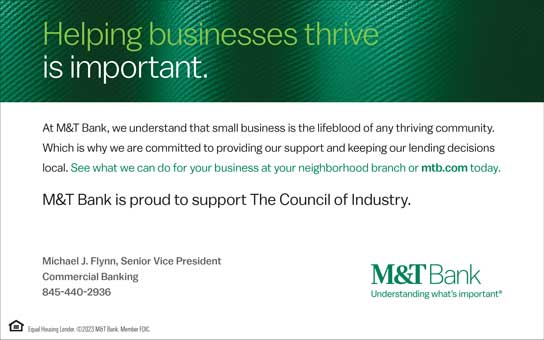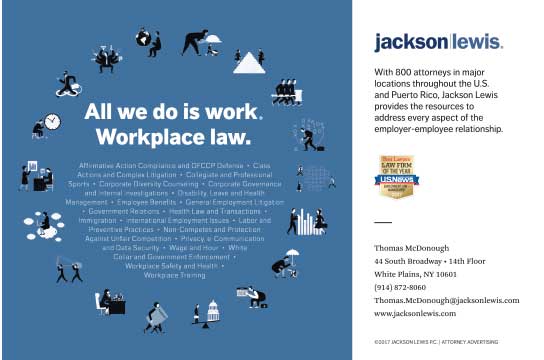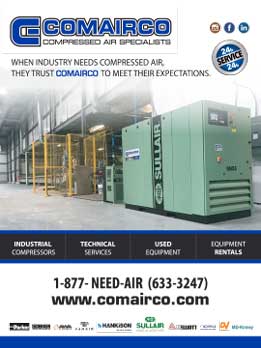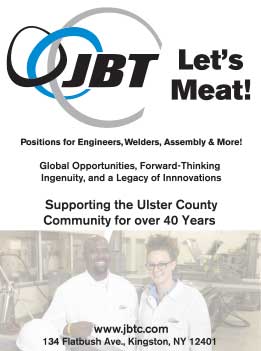RAND COMMERCIAL | BY PAUL ADLER, ESQ., SIOR

How Do You Build A Workforce Without Affordable Housing?
The Hudson Valley and New York State are in an acute housing crisis. The rents are too damn high–and why? Because not enough affordable housing is being built in the region. With home ownership increasingly out of reach, folks can no longer afford to stay and live in New York State. Everyone loses when our young, who were educated and grew up in the Hudson Valley, are forced to look elsewhere to start their careers. The biggest losers, however, are the region’s employers, particularly manufacturers, who can’t raise wages high enough so their employees can afford an entry-level home or apartment.
It is ironic that our region pays some of the largest property tax bills in the nation, and yet we will let our young people flee the jurisdiction by the thousands. We pay to educate them, and then lose the most valuable resource we have to other regions because of a self-imposed lack of housing supply.
Jobs and Housing By the Numbers
Housing statistics for the Hudson Valley from the Hudson Gateway Association of Realtors MLS, show a steady decline in inventory for single family housing. Pricing continues to rise but at a much slower pace than pandemic pricing. At the end of 2022, the median price in the Hudson Valley for a single family was $565,000 which was a 7.6% increase over the previous year.
The Housing Affordability Index in New York dropped by 25.6% QtoQ to 93. A higher number means greater affordability. As borrowing costs continue to rise, many buyers and sellers are choosing to wait while the market resets before making their next move. Pending Sales in New York State were down 9.8% to 37,292.
Affordable housing is housing which is deemed affordable to those worth a household income at or below the median as rated by the national government or a local government by a recognized housing affordability index.
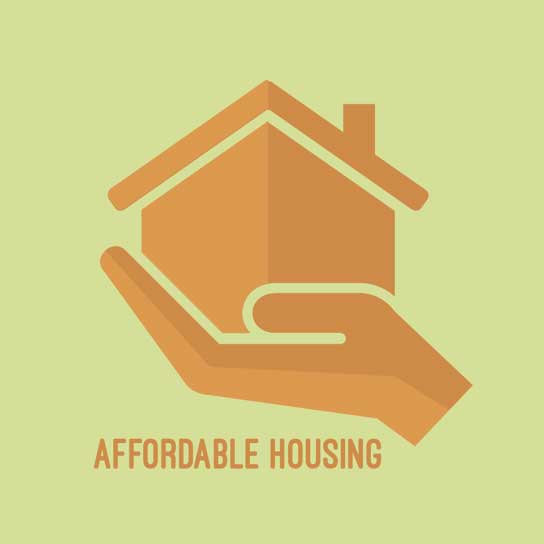
In the decade before the pandemic, we created jobs at three times the rate of housing units, leaving us with 1.25 million jobs but only 400,000 units of housing. We now have the jobs, but where are you going to put the workers? Where are they supposed to live?
For our region’s manufacturing employers, whose business challenges include rising prices, competition from businesses across the country and the world, and a shortage of workers, this affordable housing crisis is making a bad situation worse.
Why is Supply not Meeting Demand
Things to think about that have a cause and effect on why supply is not meeting demand. What is Home Rule? Home Rule is granted by state constitution or state statute and allocates some autonomy to a local government if the local government accepts certain conditions. Home Rule implies that each level of government has a separate realm of authority.
The topic of affordable housing is a third rail issue to many politicians in the region. Local planning and zoning rules have been used too often to exclude building for working class residents. The focus on single jurisdictions leads to a lack of a vision and understanding that a robust housing strategy for the region is a vital engine for economic development.
What are our local officials so afraid of?
Corporate and Industrial America will not choose to grow in towns and villages that make it difficult to develop and invest. The NYS-based property tax system is crushing residential taxpayers making it impossible for young families to start here, and for senior families on fixed incomes to stay here.
Without a viable and sustainable commercial tax base, the combination of municipal salaries, pensions, government waste, duplication of services, and a largely residential homestead tax base, the future is bleak for growth and viability.
Additionally, the Downtown Revitalization Initiative (DRI) and NY Forward programs could focus on “upzoning” as a primary consideration for community selection. Upzoning is the process of increasing the zoning density in a particular municipality or neighborhood within a municipality. This usually involves increasing (up) zoning on single residential lots to allow for multifamily units such as duplexes and triplexes and ADUs (accessory dwelling units).
Basically, the delicate ecosystem that most New Yorkers hold dear, the reason you moved here and the reason you want to stay, is being destroyed. Its destruction is rooted in old prejudices that cause fear in the heart of the residents of our towns and villages, which is sure fire way to get the “anti’s” out against any project that calls itself intergenerational or multi-family.
A “very ambitious housing plan” to meet New York’s need for 800,000 to 1.2 million new units of housing is necessary over the next decade or sooner.
How can we fix the problem?
Governor Hochul, in her State Of the State address, called for action to alleviate the affordable housing crisis across the state. “We are in the midst of a housing crisis that has been decades in the making,” the governor said.
Matt Rand, Managing Partner at Howard Hanna Rand Realty and member of the governor’s Mid-Hudson Regional Economic Development Council, shares Governor Hochul’s vision that a “very ambitious housing plan” to meet New York’s need for 800,000 to 1.2 million new units of housing is necessary over the next decade or sooner.
“Empire State Development could have a central mandate that encourages housing development to address the housing crisis in the state, like the workforce development initiative launched this year with the creation of the Office of Strategic Workforce Development,” Rand said.
Projects should be judged by their capacity for the creation of new housing, not just new jobs. Funding could be focused on community infrastructure, environmental remediation, or other public benefits that would encourage developers to invest in our communities and encourage municipalities to approve projects.
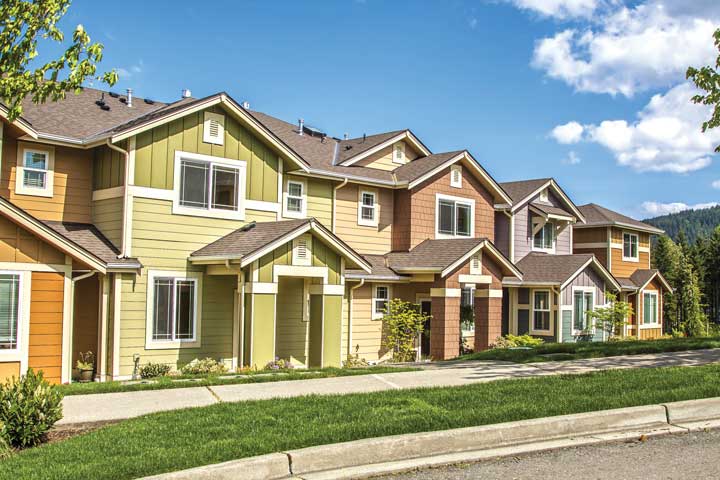
Communities across the state and within the Hudson Valley are in a fierce competition to attract new businesses, corporate expansions, retentions and relocations because of the jobs and the tax revenues that come with them. Any town or village that gets significant commercial sites “Shovel Ready” will be heads and shoulders above those that are content to grind development to a halt by a slow of death of studies, reports, meetings, hearings, and findings coupled with arbitrary dicta that makes smart growth and development nearly impossible. Municipal NIMBYISM!
Companies looking to relocate or expand are taking workforce into consideration which should include the availability and cost of housing.
“Shovel Ready” is a concept that must also be applied to affordable housing projects and TODs (transit-oriented development). Affordable Housing is economic development. Without housing, there is no employment pool for manufacturers and other job providers.
Let’s discuss the concept of “Shovel Ready”. Shovel Ready sites are ready for development. All of the zoning, planning, title work, surveys, soil and environmental studies, and public infrastructure engineering completed, and transportation access before the site is offered for sale. Clearly, not every eventuality can be foreseen; but the whole idea of everything else being studied and approved will allow for quick work to deliberate those planning points not covered under shovel ready.

The idea that a municipality is making it easier for commercial development interested in locating in your community is the real economic development incentive, NOT corporate tax breaks.
Think about a well thought out Shovel Ready development vetted by the town or village you live in that can promise a quick entitlement process versus having to subsidize the developer with onerous property tax breaks that break the backs of our school children.
The concept of payments in lieu of taxes also known as PILOTS could be revisited and downwardly adjusted. Instead of having the zoning and planning process take years in many cases and make it difficult to proceed forward, a pre-vetted Shovel Ready site could be approved, built, employing folks, and paying commercial real property taxes instead.
Businesses appreciate the transparency in these site selections, letting them move quickly through the development and construction phases in order to get their businesses established and productive quickly. Cost is always a major factor, and shovel-ready sites reduce up-front development investments, making these sites especially attractive.
Owners and communities are embracing shovel-ready certification because it helps differentiate them in a crowded marketplace. Completing the up-front assessments and regulatory requirements positions them as progressive and ready for business, just what potential buyers are looking for.
Communities need to be well positioned for smart growth. Not all sites are created equal, not all communities are created equal in the development world. Shovel Ready planning equals opportunity.
When time is money, the ability to fast-track projects is critical. Let’s set the course for the Next Generation Development in our region and become an engine of economic growth by forward planning and community commitment.
The future of New York State outside the City of New York is bleak without a plan to address affordable housing that keeps our young and seniors here in the county. Businesses will look to areas where jobs can be filled with local talent. Diversity and innovative designs that meet the needs of a younger generation must be recognized and adopted into a new and dynamic zoning code that looks to the future while preserving our beautiful way of life in New York State.



